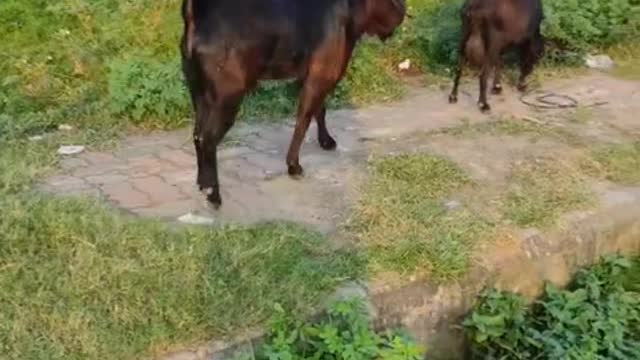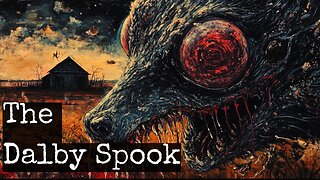Premium Only Content

Male and female goat.
The goat or domestic goat (Capra hircus) is a domesticated species of goat-antelope typically kept as livestock. It was domesticated from the wild goat (C. aegagrus) of Southwest Asia and Eastern Europe. The goat is a member of the animal family Bovidae and the tribe Caprini, meaning it is closely related to the sheep. There are over 300 distinct breeds of goat.[1] It is one of the oldest domesticated species of animal, according to archaeological evidence that its earliest domestication occurred in Iran at 10,000 calibrated calendar years ago.
Domestic goat
Temporal range: 0.01–0 Ma
PreꞒ
Ꞓ
O
S
D
C
P
T
J
K
Pg
N
↓
Neolithic–Recent
A pygmy goat on a tree stump
Conservation status
Domesticated
Scientific classificationKingdom:AnimaliaPhylum:ChordataClass:MammaliaOrder:ArtiodactylaFamily:BovidaeSubfamily:CaprinaeTribe:CapriniGenus:CapraSpecies:
C. hircus
Binomial nameCapra hircus
Linnaeus, 1758
Synonyms
Capra aegagrus hircus Linnaeus, 1758
Capra depressa Linnaeus, 1758
Capra mambrica Linnaeus, 1758
Capra reversa Linnaeus, 1758
Goat-herding is an ancient tradition that is still important in places such as Egypt.
Goats have been used for milk, meat, fur, and skins across much of the world.[3] Milk from goats is often turned into goat cheese.
Female goats are referred to as does or nannies, intact males are called bucks or billies, and juvenile goats of both sexes are called kids. Castrated males are called wethers. While the words hircine and caprine both refer to anything having a goat-like quality, hircine is used most often to emphasize the distinct smell of domestic goats.
In 2011, there were more than 924 million goats living in the world, according to the UN Food and Agriculture Organization.
-
 18:10
18:10
Sideserf Cake Studio
4 hours ago $0.24 earnedIs This the ULTIMATE Cake Smashing Moment?
5.02K -
 12:51
12:51
Misha Petrov
17 hours agoTrump KICKS OUT Zelenskyy After HEATED White House Meeting!
5.18K51 -
 16:39
16:39
Tactical Considerations
1 day ago $0.21 earnedWatchtower Apache Double Stack 1911 Made Me Question Everything?
3.76K -
 16:20
16:20
T-SPLY
5 hours agoCNN Meltdown Over Zelesnky Disrespecting Donald Trump And JD Vance
3.2K9 -
 8:39
8:39
Silver Dragons
22 hours agoGold & Silver Price KEEP DROPPING 👀
2.75K4 -
 1:20:14
1:20:14
TheTapeLibrary
18 hours ago $0.19 earnedThe Strangest Paranormal Case of All Time
1.96K1 -
 13:58
13:58
Chris From The 740
7 hours ago $0.04 earnedOld School Icon, New School Features – The Influencer X Hits The Mark!
1.29K -
 30:31
30:31
SB Mowing
1 day agoI brought in REINFORCEMENTS when I saw the state of this yard
154K51 -
 1:59:13
1:59:13
Adam Carolla
2 days agoBeing Republican & in Hollywood +Kelsey Grammer on Fatherhood + Peter Berg's Super Bowl Commercials
100K45 -
 18:29
18:29
DeVory Darkins
18 hours ago $48.47 earnedZelenskyy KICKED OUT of the White House after shouting match erupts
144K256